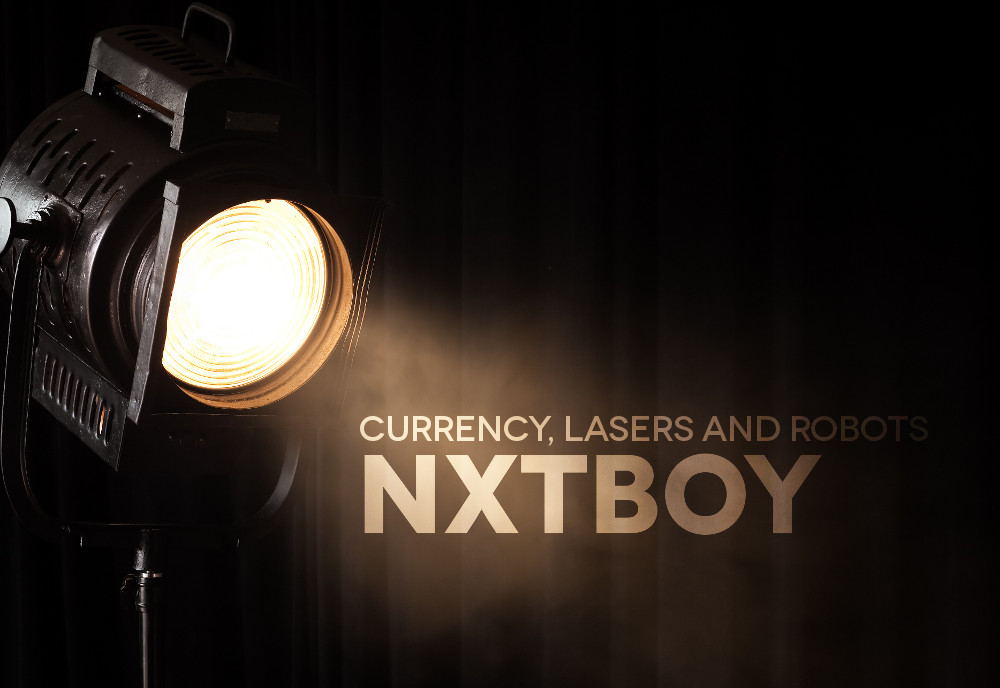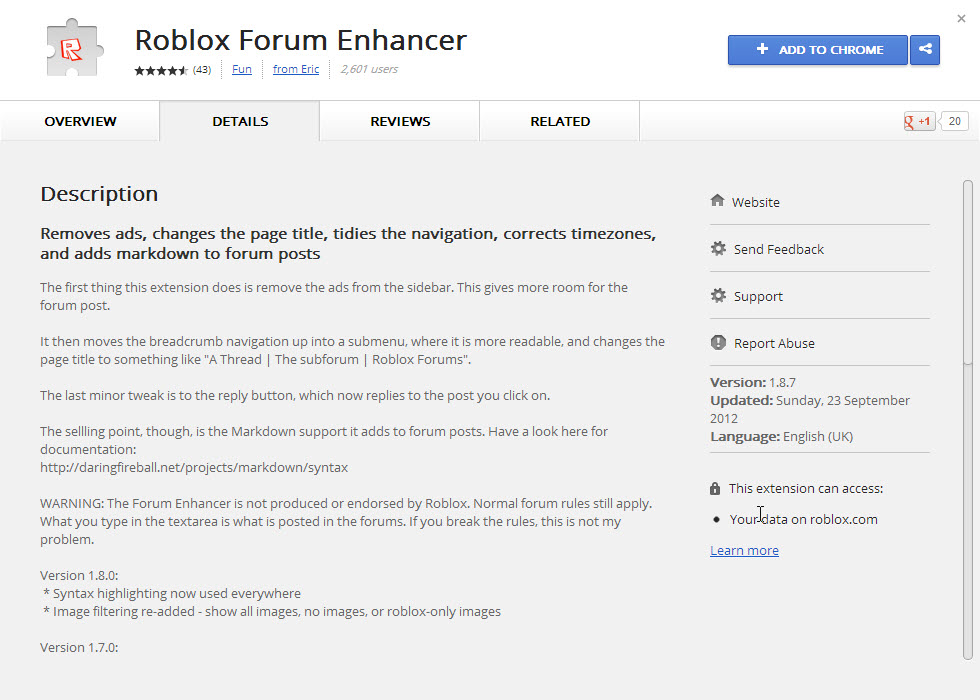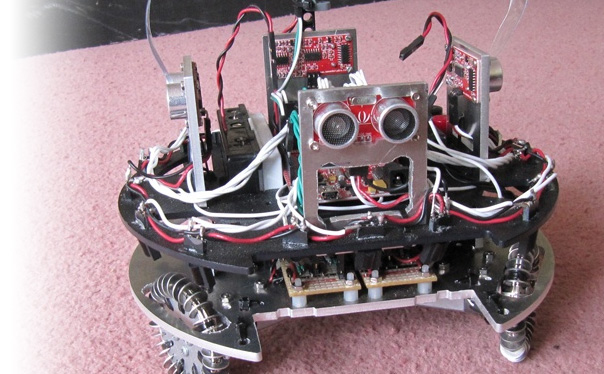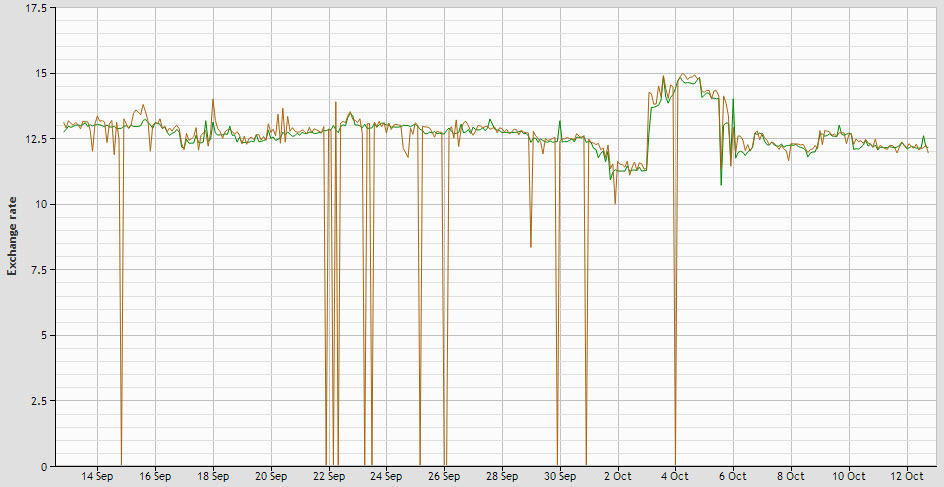Blog Archive
 Since he was a kid, user NXTBoy has been interested in building. An award-winning robotics builder by the time he was a teenager, he’s also made some innovative games and services for ROBLOX, including an Exchange Statistics website that tracks the exchange rates of ROBLOX currency.
Since he was a kid, user NXTBoy has been interested in building. An award-winning robotics builder by the time he was a teenager, he’s also made some innovative games and services for ROBLOX, including an Exchange Statistics website that tracks the exchange rates of ROBLOX currency.
The website is essentially a chart that updates itself. NXTBoy originally launched it in 2008 as an excuse to re-learn SQL (Structured Query Language), a special-purpose programming language.“Basically, I created a cron-job that scrapes the currency exchange page every two hours,” recalls NXTBoy. “I used XPath selectors to extract info, and stored the data in my SQL database.”
The chart itself has a slick interface and graphics. You’d think the person who made it must have been really into the ROBLOX currency exchange, though NXTBoy insists this wasn’t the case. When asked why he decided to create the evolving exchange chart, he responded simply, “Because I could.”
Many users today have found ways to leverage our currency exchange, which lets them trade Robux for Tickets (and vice versa), to make a profit. The exchange is based on supply and demand, meaning the value of each currency fluctuates based on how much is available. NXTBoy’s chart gives users a resource for trading currency at a rate with which they’re satisfied.
But NXTBoy has a more challenge- than profit-oriented attitude. He builds things to solve problems or streamline existing interfaces. The things he’s created are interesting because they are all created to do something specific.
 NXTBoy’s proudest ROBLOX achievement was the ROBLOX Forum Enhancer, a Chrome extension that features numerous changes and streamlines the forum interface using a different type of coding language called “Markdown.”
NXTBoy’s proudest ROBLOX achievement was the ROBLOX Forum Enhancer, a Chrome extension that features numerous changes and streamlines the forum interface using a different type of coding language called “Markdown.”
“Markdown adds things like syntax highlighting to the forums, and adds infinite scrolling, meaning if you scroll to the bottom of one page, it loads the next page of the thread. “
The Forum Enhancer has a bevy of features bundled in, including relative time stamps, (i.e., “yesterday” or “one minute ago”), a streamlined user interface, and a new post screen.
After creating these helpful services, NXTBoy shifted his attention to creating a popular game. OMG Lasers has been visited over 16,000 times, but it’s more of a tech demo than a game. In it, you utilize two different types of laser shooters (one is a straight shot, the other is more of a shotgun laser blast) to cast reflections off of a centralized mirror in the map, cascading the lasers in multiple directions realistically. This means you can use reflective surfaces in the game to fire your lasers at opposing team members.
NXTBoy leveraged ROBLOX’s Find Part On Ray method to create his lasers, and developed his own system that would realistically reflect them. He claims that his method, which involves studying the surface that a laser touches, finding its vector, then using specular reflection to determine the direction of the outward beam, should be understandable to someone who knows how to build, say, a gun using ROBLOX. NXTBoy documented the code for his initial laser (note: it doesn’t reflect); you can find it here.
We had NXTBoy walk us through his method for reflecting lasers–he was able to break the process down into eight steps.
1. Set the length of the ray, with `.length`, and `:raycast()` it 2. The results are `part, firedRay, remainingRay` 3. `:draw()` the firedRay 4. Look at the start of `remainingRay`, and the part hit 5. Work out which surface of part was hit (taking into account wedges, bricks, spheres) 6. Find the normal vector for that face (the one that points straight out) 7. Calculate the new reflected ray: `remainingRay:specularReflection(normal)` 8. Repeat until no part is hit (don't set the `.length` after the first time`)
“By the time I had found ROBLOX, I had been in an international robotics competition,” recalls NXTBoy. “I now participate every year. ROBLOX gave me a nice environment to test physics and math for use elsewhere.”
 Recently, NXTBoy won first prize at a FIRST LEGO League competition, where he and his team had to build robots, on the fly, to accomplish spontaneous missions in as short a time as possible. He’s also gotten himself a local tech job, working in the Semiconductors division of Cambridge Consultants–a real honor for someone his age, seeing how they only take in 10 students a year.
Recently, NXTBoy won first prize at a FIRST LEGO League competition, where he and his team had to build robots, on the fly, to accomplish spontaneous missions in as short a time as possible. He’s also gotten himself a local tech job, working in the Semiconductors division of Cambridge Consultants–a real honor for someone his age, seeing how they only take in 10 students a year.
NXT Boy also acts as a contributing editor to the ROBLOX Wiki, where he maintains pages about scripting on ROBLOX. He recently finished building a functional multiplayer game using Javascript, and is constantly training to win more competitions in robotics.
With all these things going on, NXTBoy keeps quite a level head, and has this advice to share:
“Work hard, and make sure to get involved in things that truly interest you. That’s how I got to be where I am today.”
Our advice: explore ROBLOX’s huge variety of features–from economics and game development to building machines and experimenting with physics–to find something that interests you, and leverage its creative power.

